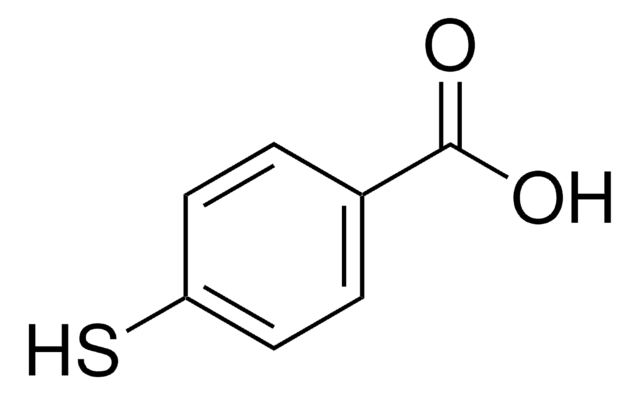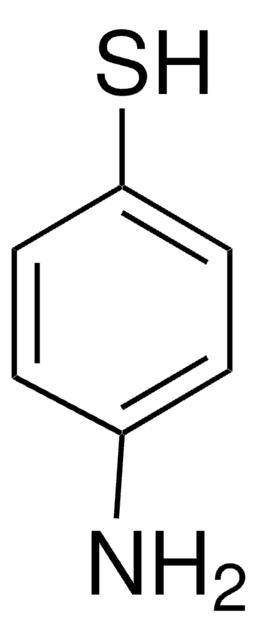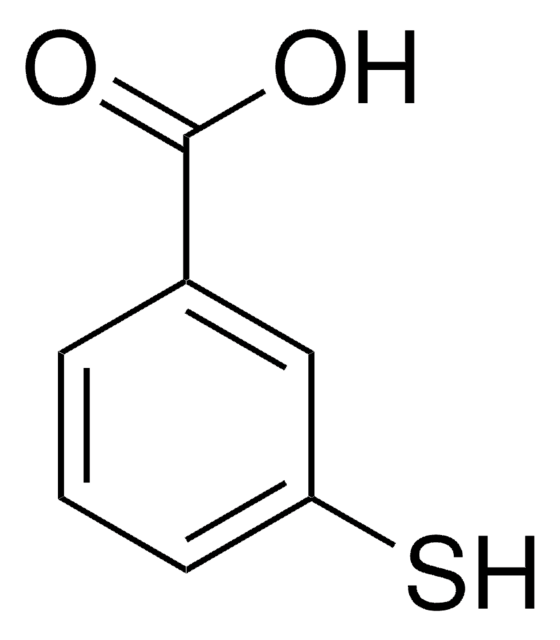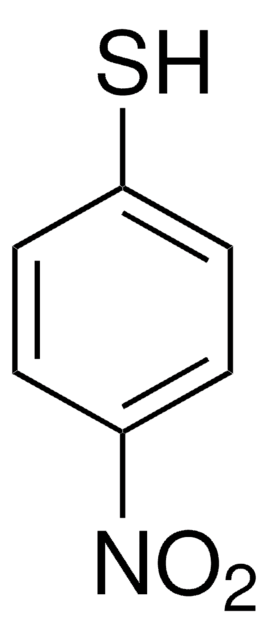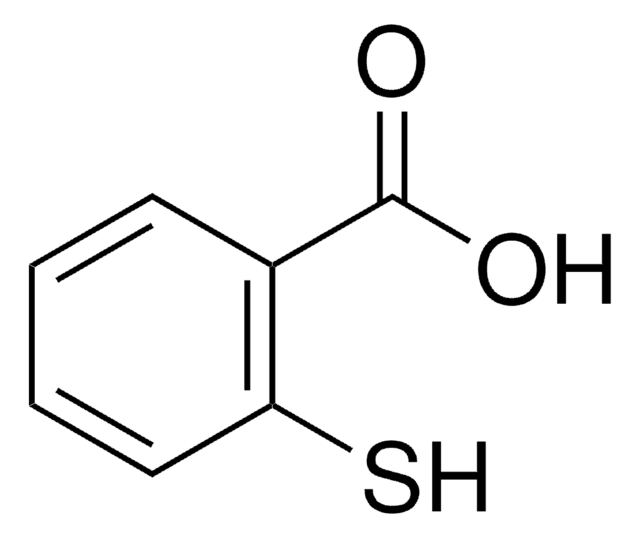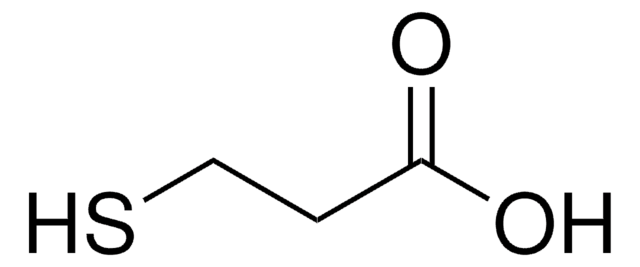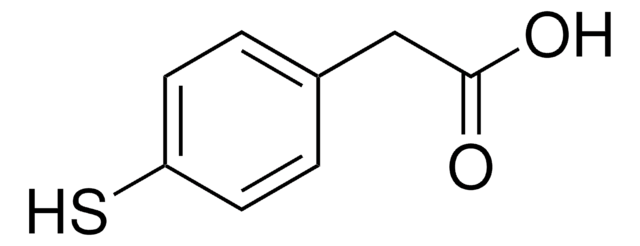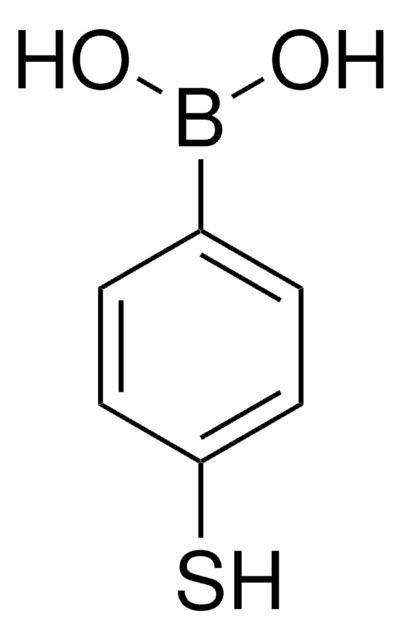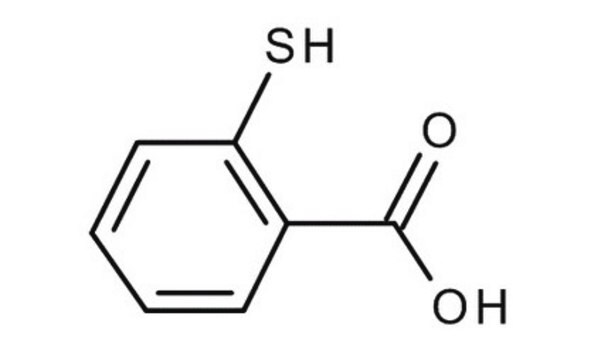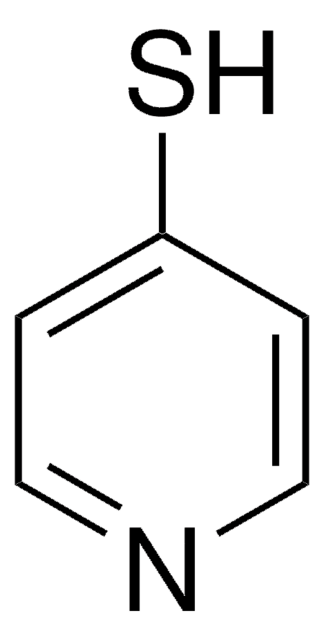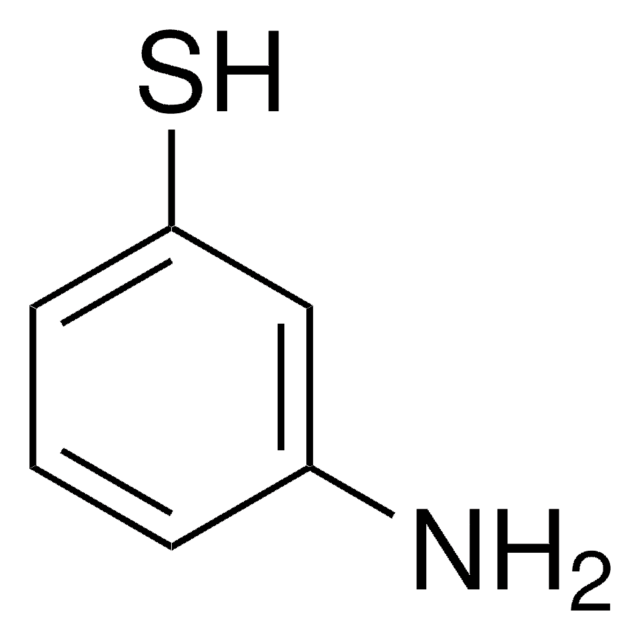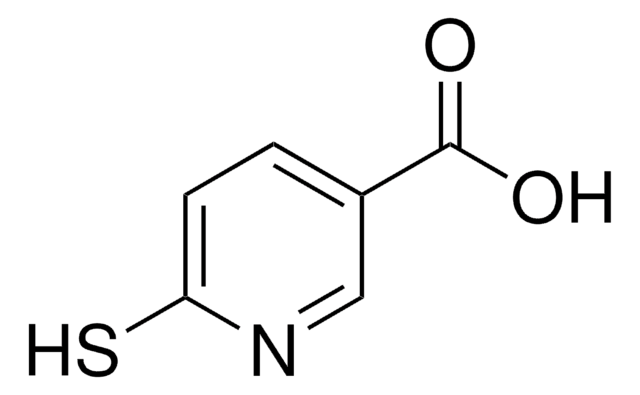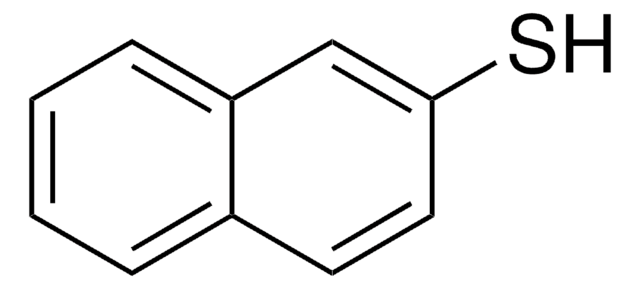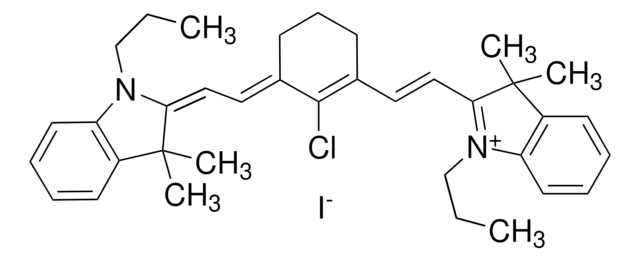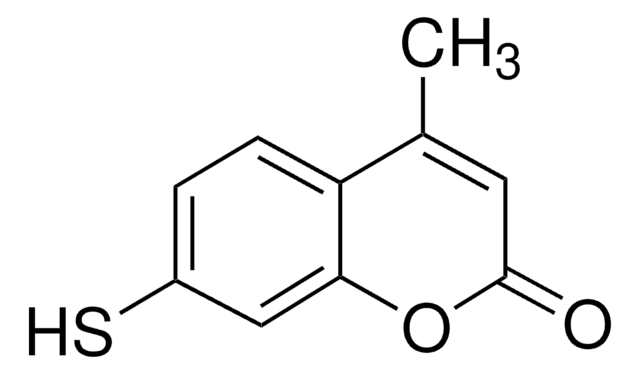662534
4-Mercaptobenzoic acid
technical grade, 90%
동의어(들):
4-Carboxybenzenethiol, 4-Carboxythiophenol, 4-Mercaptobenzoic acid, p-Carboxybenzenethiol, p-Mercaptobenzoic acid
로그인조직 및 계약 가격 보기
모든 사진(3)
About This Item
Linear Formula:
HSC6H4CO2H
CAS Number:
Molecular Weight:
154.19
MDL number:
UNSPSC 코드:
12352100
PubChem Substance ID:
NACRES:
NA.22
추천 제품
Grade
technical grade
분석
90%
양식
solid
mp
215-224 °C (lit.)
작용기
carboxylic acid
SMILES string
OC(=O)c1ccc(S)cc1
InChI
1S/C7H6O2S/c8-7(9)5-1-3-6(10)4-2-5/h1-4,10H,(H,8,9)
InChI key
LMJXSOYPAOSIPZ-UHFFFAOYSA-N
유사한 제품을 찾으십니까? 방문 제품 비교 안내
일반 설명
4-Mercaptobenzoic acid (4-MBA), also known as 4-Carboxythiophenol or p-Mercaptobenzoic acid, is an aromatic compound used in organic synthesis. 4-MBA promotes the formation of disulfide bonds through its reactive thiol (-SH) group. The sulfur atom in the thiol group is highly nucleophilic, allowing it to attack electrophiles. facilitates the formation of diverse thiol-containing compounds. Additionally, 4-MBA serves as a ligand to form coordination complexes and is utilized for surface functionalization, particularly in creating self-assembled monolayers (SAMs) on metal surfaces.
애플리케이션
- SERS substrate for food adulteration detection: 4-Mercaptobenzoic acid was employed in the layer-by-layer biopolymer assembly for the in situ fabrication of AuNP plasmonic paper, serving as a SERS substrate useful in detecting food adulteration (Viriyakitpattana et al., 2024).
- Development of magneto-plasmonic nanoparticles: Research highlighted the use of 4-Mercaptobenzoic acid in the multiwavelength SERS of magneto-plasmonic nanoparticles, obtained through combined laser ablation and solvothermal methods, showing versatility in nanoparticle synthesis (Talaikis et al., 2023).
신호어
Warning
유해 및 위험 성명서
Hazard Classifications
Eye Irrit. 2 - Skin Irrit. 2 - STOT SE 3
표적 기관
Respiratory system
Storage Class Code
11 - Combustible Solids
WGK
WGK 3
Flash Point (°F)
Not applicable
Flash Point (°C)
Not applicable
개인 보호 장비
dust mask type N95 (US), Eyeshields, Gloves
이미 열람한 고객
Molly K Gregas et al.
Applied spectroscopy, 64(8), 858-866 (2010-08-20)
We describe the development and application of a co-functionalized nanoprobe and biodelivery platform combining a nuclear targeting peptide (NTP) for improved cellular uptake and intracellular targeting with p-mercaptobenzoic acid (pMBA) as a surface-enhanced Raman scattering (SERS) reporter for tracking and
Wen-Tsen Chen et al.
Journal of the American Society for Mass Spectrometry, 21(5), 864-867 (2010-02-23)
We have developed a new internal standard method for the determination of the concentration of captopril (CAP) through surface-assisted laser desorption/ionization mass spectrometry (SALDI-MS) using gold nanoparticles (Au NPs). This approach provided linearity for CAP over the concentration range 2.5-25
Aleksandra Jaworska et al.
The Analyst, 140(7), 2321-2329 (2014-12-09)
The intracellular pH plays an important role in various cellular processes. In this work, we describe a method for monitoring of the intracellular pH in endothelial cells by using surface enhanced Raman spectroscopy (SERS) and 4-mercaptobenzoic acid (MBA) anchored to
Fenglin Wang et al.
Analytical chemistry, 84(18), 8013-8019 (2012-08-14)
Sensors based upon surface-enhanced Raman spectroscopy (SERS) are attractive because they have narrow, vibrationally specific spectral peaks that can be excited using red and near-infrared light which avoids photobleaching, penetrates tissue, and reduces autofluorescence. Several groups have fabricated pH nanosensors
Garima Gupta et al.
Biosensors & bioelectronics, 36(1), 95-102 (2012-04-27)
Surface plasmon resonance (SPR) immunosensor using 4-mercaptobenzoic acid (4-MBA) modified gold SPR chip was developed first time for the detection of flagellin specific antibodies of Salmonella typhi (S. typhi). Flagellin protein of S. typhi was prepared by recombinant DNA technology.
자사의 과학자팀은 생명 과학, 재료 과학, 화학 합성, 크로마토그래피, 분석 및 기타 많은 영역을 포함한 모든 과학 분야에 경험이 있습니다..
고객지원팀으로 연락바랍니다.